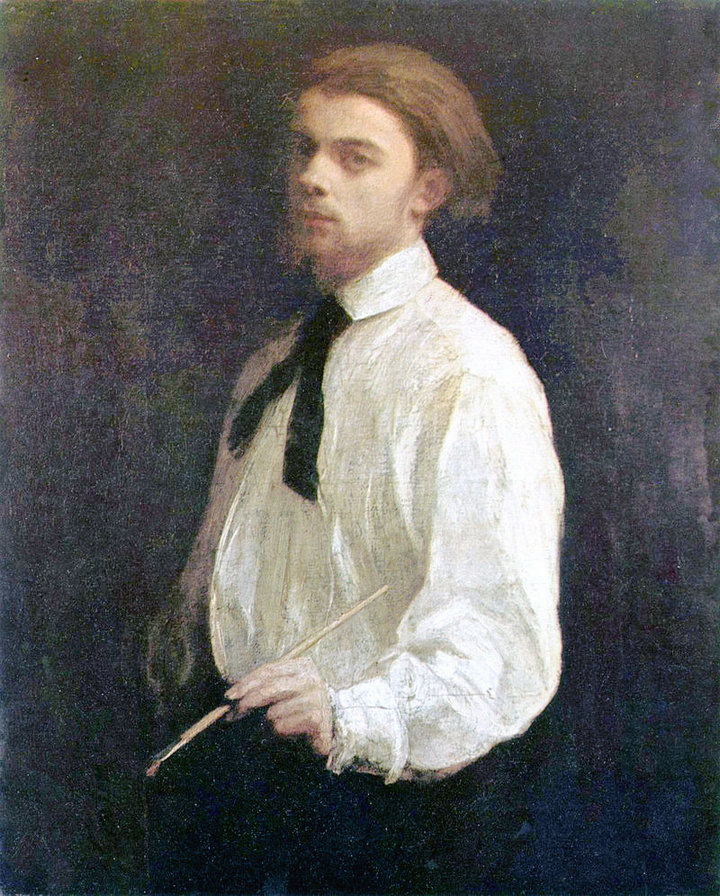Ignace Henri Jean Theodore Fantin-Latour, known as Henri Fantin-Latour (born in Grenoble on January 14, 1836 and died in Buré on August 25, 1904), is a realistic and intimate painter, and French lithographer, best known for his flower paintings and group portraits of Parisian artists and writers.
He was born Ignace Henri Jean Théodore Fantin-Latour in Grenoble, Isère. As a youth, he received drawing lessons from his father, who was an artist, then with the small School of drawing of Paris with Louis-Alexandre Péron and Horace Lecoq de Boisbaudran.
In 1850 he entered the Ecole de Dessin, where he studied with Lecoq de Boisbaudran. After studying at the École des Beaux-Arts in Paris from 1854, he devoted much time to copying the works of the old masters in the Musée du Louvre. Although Fantin-Latour befriended several of the young artists who would later be associated with Impressionism, including Whistler and Manet, Fantin’s own work remained conservative in style.
In 1861, he briefly attended the workshop of Gustave Courbet, rue Notre-Dame-des-Champs. He married Victoria Dubourg in 1876, who was a painter like himself. He then spent his summers in the residence of his wife’s family in Buré in Lower Normandy.
A member of the so-called “1863” group, and then of the Cenacle des Batignolles, from which Impressionism emerged, Gustave Kahn, the link between today’s painters and romantic painting, In 1867 he was also one of the nine members of the “Jinglar Society of Japan” with Carolus Duran and ceramists Bracquemond and Solon, who met for a Japanese dinner. “One always feels a little feeling of fright because of the harsh ways that the artists of his generation often affected as inseparable from a noble independence,” said Blanche, a painter friend of the next generation.
Fantin renovated the collective portrait with large-scale manifestos: Homage to Delacroix, 1864; The Toast, a tribute to realistic painters, 1865, which he himself destroyed by retaining only the fragments of three portraits preserved at the Freer Callery in Washington, 5 at the Musée d’Orsay6 and his self-portrait in a Dutch private collection; A workshop at the Batignolles, homage to Manet, 1870; A table corner, homage to the Parnassian poets, 1872, of which Verlaine and Rimbaud; Around the piano, a tribute to musicians and musicologists, 1885.
His still lifes, flowers or fruits, have often found buyer; His interior scenes are realized in a quasi-monochrome range of gray and brown. It was his friend Whistler who drew attention to Fantin in England at a time when French Impressionist painting was little appreciated in this country. He put her in touch with her brother-in-law Francis Seymour Haden and the engraver Edwin Edwards. Passionate about music, particularly by Berlioz, Schumann and Wagner, Fantin tries to transcribe it by fluid paintings executed in long touches (Trois filles du Rhin, 1876), and dedicates most of his lithographs. His portraits of his wife Victoria Dubourg, or of his friends, Manet, Verlaine, have a harmonious and incisive realism.
Whistler brought attention to Fantin in England, where his still-lifes sold so well that they were “practically unknown in France during his lifetime”. In addition to his realistic paintings, Fantin-Latour created imaginative lithographs inspired by the music of some of the great classical composers.
In 1875, Henri Fantin-Latour married a fellow painter, Victoria Dubourg, after which he spent his summers on the country estate of his wife’s family at Buré, Orne in Lower Normandy, where he died on 25 August 1904.
He is buried in Paris in the Montparnasse cemetery.
Many young women’s hands would be incapable of doing what I see there,’ said the Prince, pointing to Mme de Villeparisis’s unfinished watercolours. And he has asked her whether she had seen the flower painting by Fantin-Latour which had recently been exhibited.
The painting A basket of roses was used as the cover of New Order’s album Power, Corruption & Lies by Peter Saville in 1983.
